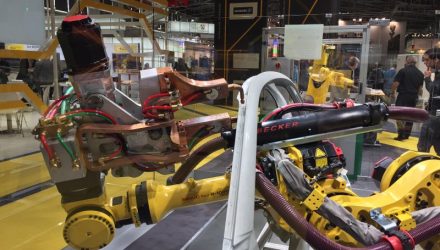All of these things contribute to robots that can be placed anywhere on the manufacturing floor. The future will continue to enhance technology like 3D embedded vision, multispectral, and hyperspectral imaging. This, combined with artificial intelligence and deep learning, will empower industrial robots to improve themselves and keep pace with the human workers around them.
We’re already seeing companies like Fanuc working on robots that can teach themselves, so this aspect of the future is already becoming a reality. All of this will also be fueled by massive growth in the industry as whole.
The industrial robot industry is expected to grow 175% over the next nine years, which will result in more competition and innovation, which will drive these modern technologies forward. Collaborative robots will continue to become safer and their costs will go down as the industry expands and offers more options.
While robots are largely involved in automotive manufacturing, as they become smaller and more accurate, it’s predicted that robots will also enter the electronics manufacturing sector to assist with building complex things like smartphones or microchips.
By 2025, it’s expected that the demand for electronics manufacturing robots will match the automotive industry. We’re already seeing growth across all robotics industries. How do you expect the future to evolve as robots continue to grow and enhance their abilities? Let us know in the comments!
For more trends, visit the Robotics & AI Channel.
